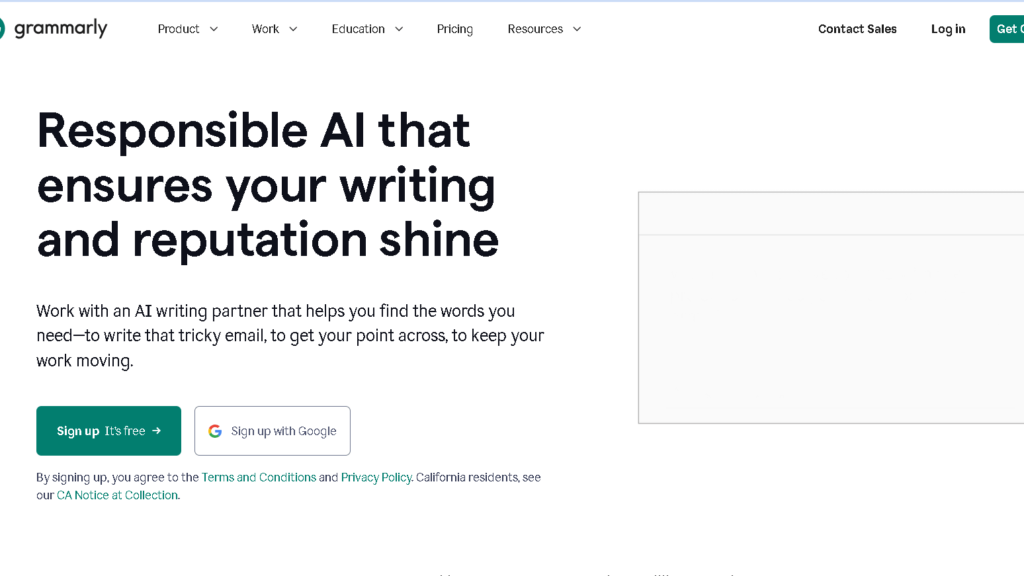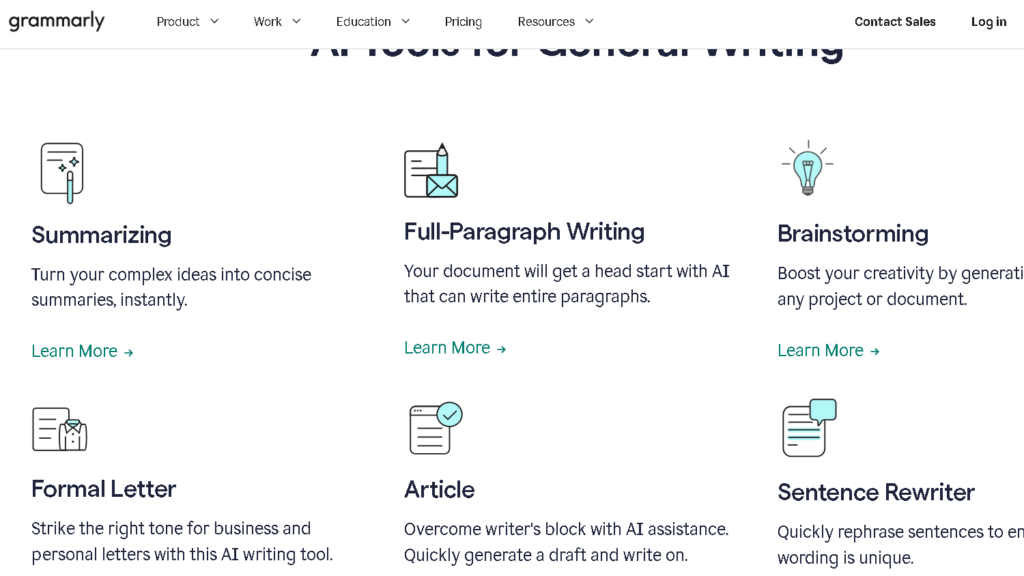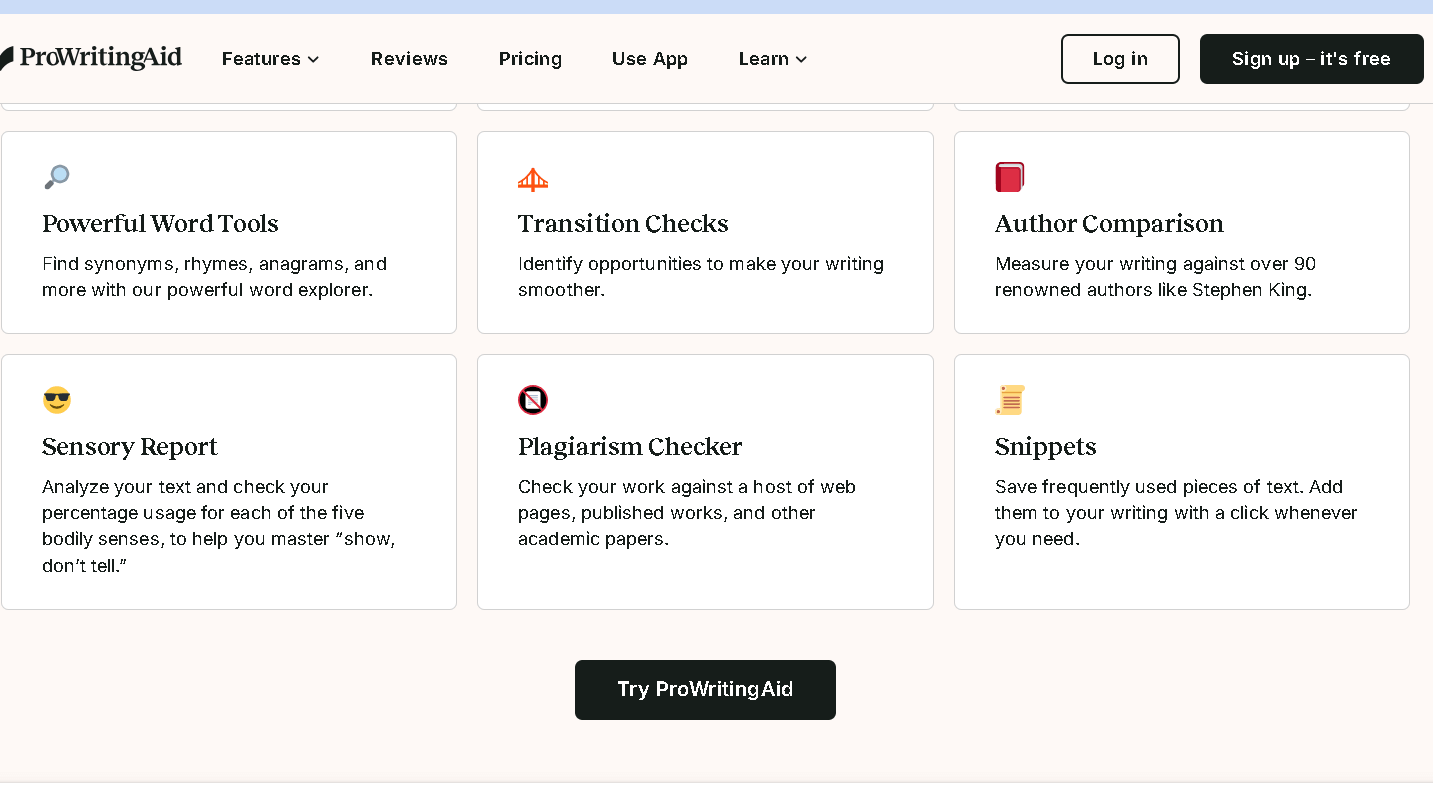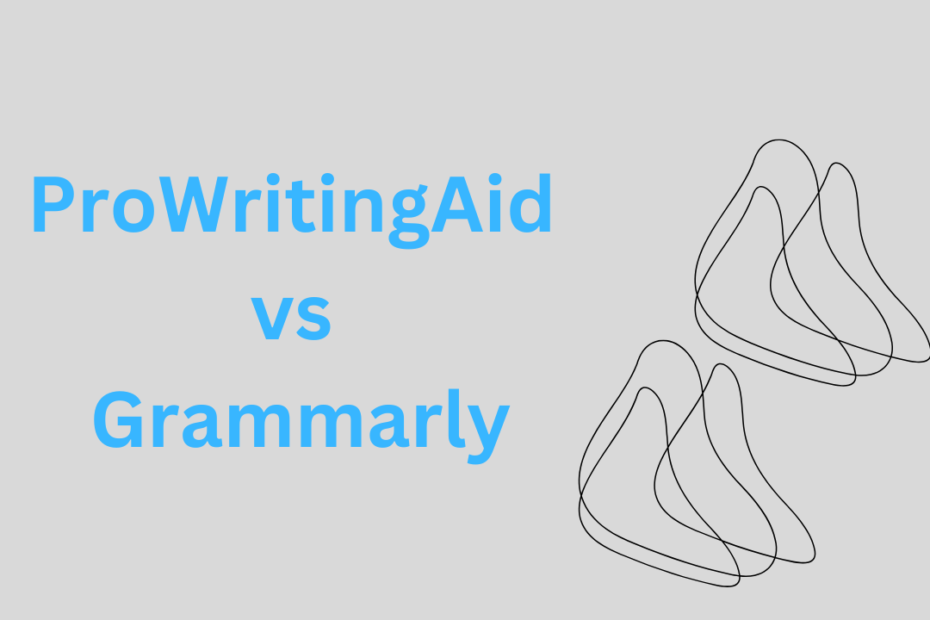Whether you choose ProWritingAid vs Grammarly will depend on your individual writing process and what you are seeking in a tool. Its user interface is lightweight and it supports many applications, so it is preferable for recreational writing, fast editing and collaborative writing.
If you’re sending urgent emails or just need quick fixes, Grammarly is a timesaver and works almost anywhere. But, ProWritingAid has been favored by many types of writers including those who desire extensive analysis and detailed reports such as authors and creative writers .
It has more than 25 reports which will catch things like clichés, pacing, and sentence structure. It’s unique if you are interviews long projects or if you want to practice your storytelling.
I’m familiar with both. Grammarly’s AI features are unlimited and reader friendly, while further probing into the creative aspects of your writing. One of them might simply just click better with you depending on your goals.
ProWritingAid vs Grammarly: Core Differences

When we compare them side by side, two distinct differences between ProWritingAid and Grammarly stand out. These distinctions are relevant; each has an intended user, they each have corresponding strengths and weaknesses, and they each are better suited than the other to certain types of writing.
Intended Users and Best Use Cases
I think of Grammarly as the product for the non-elite. It’s a good writing tool for business writing, email, school papers or quick online posts.
It’s simple and has wide app integration and is usable virtually anywhere. Its style guides and tone tools are also much loved by content creators and teams, who are grateful for having a tool that keeps their messaging consistent.
ProWritingAid caters to creative writers and authors. Its edit tools are designed for lengthy works such as novels or heavy reports. The various accounts study pacing, clichés, and structure, which is something that helps when you’re trying to write stories or de-junk dense material .
It’s a little more difficult to get into but if you need intense, in- depth editing this is fairly unbeatable.
Strengths and Weaknesses
Grammarly’s two major strengths are that it is extremely easy to use and that there are unlimited AI- generated suggestions. It also has a strong built in plagiarism checker and integrates with over 500,000 apps.
But, it is not as rich in specialized reports or in the depth of creative editing. ProWritingAid has 25+ reports and manuscript tools to catch mistakes other apps don’t. Catch? For non-experts, the syntax can be off-putting and prohibits frequent use of AI on an everyday basis. On top of that, they charge extra for plagiarism checks, which may irritate you frugal people.
Writing Goals and Content Types
If all I care about is avoid typos or awkward business or school writing, then Grammarly does that for me. It enhances clarity, tone, and correctness and does so rapidly.
Its instant corrections and user-friendly interface are helpful to students and practitioners. For creative writing- novels or storytelling- my preference is ProWritingAid. It’s very useful for tracking the beat of a story and repetitive wording and phrases and I use it during the final stages of my creative drafts.
Writers of long form, and those dealing with narrative work, will likely derive the most benefit from the detailed info on editing .
Grammar and Spelling Checks
ProWritingAid and Grammarly both excel in grammar and spelling checks. Despite the similarities, each option presents its suggestions differently and flags different types of errors.
Accuracy and Reliability
Grammarly is great for catching obvious grammatical errors and easy-to-solve issues. The AI identifies regular mistakes and corrects them with very few false positives.
For quick, no nonsense editing in emails, essays, or reports it is ideal. ProWritingAid has a slight preference toward stronger analysis. It sometimes identifies creative or unconventional phrasing as a mistake, so you may want to double check its recommendations.
If you’re looking to get more substantive feedback and don’t mind doing a bit more of the review yourself, ProWritingAid is excellent for that. In my experience, Grammarly’s suggestions have also been better suited to standard English more generally, across various platforms.
Types of Grammar Issues Detected
Grammarly flags errors like subject-verb agreement, punctuation, verb tense, and comma usage. It does, but, catch some clunky, poorly written language, but looks primarily for conventional grammar forms.
It is simple, mending problems becomes easier and you do not get bogged down in reporting. While it does some of the basic features of these tools, ProWritingAid also incorporates some specialized features like notifying the user of passive sentences, repeated sentence beginnings, and variations in sentence length.
It also seeks cliches and redundancy – again, something that will greatly help your style. For those needing help with sentence structure and style, ProWritingAid is good at that. When it comes to simple, rapid repairs, Grammarly is the best.
Spelling Correction Features
The spelling correction in Grammarly is quick and complete. Typos and relatively common word confusions, such as “their” for “there”, are quickly caught and can be immediately corrected.
It is browser, app, and mobile friendly, able to catch errors in real time. ProWritingAid has good spelling checks as well, though here too you tend to have to upload or paste the text to get a full check.
It has a customizable style manual to deal with spelling preferences if you choose to, useful for British vs. American English or technical jargon. Both allow you to add words to a personal dictionary, but Grammarly also has the advantage of cross-device sync for quick, on-the-fly corrections.
Writing Style Analysis and Suggestions
I also value the reporting and feedback that comes from style because it helps me to improve my writing. Such techniques can clarify and enliven one’s writing by focusing on tone, pacing, and diction.
They help me adjust my writing for genre and maintain the flow of individual sentences. I’m also happy with a reminder or nudge to keep things readable.
Style Reports and Recommendations
ProWritingAid offers you more than 25 in-depth style reports, for things like redundancy, overused words, pacing issues, etc. These reports will make note of sticky sentences and/or a line of dialogue that feels unnatural, for example, so that you know precisely how to improve it.
This kind of deep dive will also refine your writing in ways beyond grammar. Grammarly, but, provides simple style tips that call for clarity and conciseness.
The tone detection is nice, it finds the tone of your message and tones your writing accordingly. But its commentary is not as specific. Both tools make use of color-coded highlighting and sidebars to enable you to quickly identify problems .
Genre-Specific & Creative Feedback
One of the features I love with ProWritingAid, is their genre-specific advice. If I’m writing a thriller- or romance or sci-fi, it will give suggestions that cater to that genre .
This ranges from tone and pacing to character development. While Grammarly allows you to designate writing types, such as academic or business, it doesn’t provided personalized creative suggestions.
For creative projects, ProWritingAid’s advice on story pacing and dialogue is actually useful in developing characters and plot. It’s not just grammar it has to with storytelling.
Sentence Structure and Readability
Straight sentences and readability is everything. ProWritingAid will look at your sentence structures and lengths and ensure that your writing is matched to your readership by providing you with a readability score.
It also hints at inconsistencies and provides a warning against overplaying their potential monotony. Grammarly identifies clarity and captures overly fragmented or complex sentences.
Its feedback is immediate and enables you to write more clearly, but it does not comment on pacing or rhythm. I use the two together to “get under the skin” of structure, and provide greater clarity.
Writing Assistance and AI Features

I’ll highlight the ways in which each of these helps you in the process of writing, from generating ideas, down to fine-tuning your word choice and catching mistakes. They each use artificial intelligence, but not always in the same manner.
Content Generation and Rephrasing
Rather, ProWritingAid’s AI is less about the generation of large amounts of text and more about the inspiration to craft text. It provides you with various ways to say the same thing , often towards more sensory, lush or surprising sentences.
This is perfect if you like to be in control but need some help getting started. Grammarly’s generative AI is biased towards fast authoring. You can get a quick nudge in writing if you start with a prompt and want some ideas to develop or clarify your writing.
That’s super useful for business or academic work where speed and clarity are key. Grammarly’s AI is designed for efficiency, not creativity.
Contextual Thesaurus and Vocabulary Enhancement
ProWritingAid includes an extensive contextual thesaurus that assists you in choosing the perfect word in terms of what you are trying to say in your sentence. Creative writers will find this useful because it will let style and tone take center stage, while preventing unnatural or awkward wording.
Its Simple vocabulary suggestions are fine, but it doesn’t have the depth. It is not about building your word power – it is about using words clearly and correctly . They are also very practical and simple, useful for professional and academic writing.
Proofreading Capabilities
Everything works very smoothly in both tools from the proofreading automation perspective. They will catch grammar, spelling and punctuation issues and make them very clear.
ProWritingAid provides visual color coding and structured reports for both form and style. It’s like having a personal editor who notes when I’m using the same word too many times and continuity.
Grammarly can quickly and confidently identify errors and provide remedial suggestions for them. It provides tone checking and helps you modify your style for the audience . This makes it perfect if you need a polished draft quickly.

ProWritingAid vs Grammarly-Plagiarism and Originality Checking
ProWritingAid and Grammarly both have built-in plagiarism checkers, though with features that vary. If you are in need of faith in originality checks, it is important to know about these differences.
Plagiarism Detection Capabilities
All of Grammarly’s paid options also come with a plagiarism checker. It works by cross-referencing your work to billions of websites and already published academic work .
Once subscribed you can do as many checks as you want. It’s a fast and comprehensive scan, so I can trust the originality.
ProWritingAid’s plagiarism detection, meanwhile, is only provided through a paid add-on. It is not part of the regular plans and is $10 for ten checks. Like Grammarly, it checks against online text but has a less extensive database.
Comparing Plagiarism Reports
Grammarly’s plagiarism scans readily identify and report out the exact matched sections, with suggestions for rephrasing. The reports are user friendly and do not take a lot of time to understand.
ProWritingAid’s report is similar but less complex. It’s also an add-on which means you receive less checks unless you are prepaying for them. It sounds like from the same sources, though it lacks the sheen of Grammarly.
| Feature | Grammarly | ProWritingAid |
|---|---|---|
| Included in Plan | Yes, all paid plans | No, paid add-on |
| Number of Checks | Unlimited with subscription | Limited, pay-per-check |
| Database Size | Large (web + academic) | Smaller, web only |
| Report Clarity | Clear, actionable suggestions | Basic match highlights |
Honestly, Grammarly gives you a stronger plagiarism checker out of the box. ProWritingAid’s option is handy if you already use it for other editing, but it’s not as convenient for heavy plagiarism checking.
Integrations and Platform Compatibility
ProWritingAid and Grammarly both attempt to find a place in your writing process, wherever that may be. Desktop, browser or mobile – there is an option for most. Customization, like personal dictionaries, is what helps these tools mesh with your style.
Desktop and Mobile Applications
ProWritingAid offers a powerful desktop app for both Windows and Mac. I tend to use it for extended writing pieces, like manuscripts or my creative projects .
It integrates well with Scrivener, and so writers might really appreciate that. Grammarly does offer desktop apps as well, but its mobile app is more noteworthy.
Grammarly keyboard runs on both iOS and Android, so I can correct text messages, emails or social updates right on my phone. ProWritingAid is not yet available as a mobile app, which is a bummer if you do a lot of your writing away from your desk.
Browser Extensions and Platform Integrations
Browser integration is what Grammarly excels at. Its add-ons are compatible with Chrome, Firefox, Safari, and Edge so it essentially follows me everywhere online.
Over 500,000 platforms and apps – Gmail, Google Docs, social feeds, random editors, etc. – are applicable. I like that it just drops in and begins to edit wherever I start typing.
The browser extensions for ProWritingAid are a bit less functional. It supports Chrome and Firefox, but not to the same extent as Grammarly.
It does interact with Google Docs as well as Microsoft Word, though you will notice it less frequently than you will Grammarly.
Personal Dictionary and Customization
Both also allow for a custom dictionary to be created so you there’s no need to continually fix proper nouns or brand names. Another good thing is that Grammarly’s dictionary works the same on all devices.
ProWritingAid allows you to go deeper with style guides. I can establish rules regarding tone, grammar, and even tiny things like Oxford commas or regional spellings . This is good, or extremely frustrating, depending on how picky you are about your writing standards.
| Feature | Grammarly | ProWritingAid |
|---|---|---|
| Desktop App | Yes (Windows, Mac) | Yes (Windows, Mac) |
| Mobile App | Yes (iOS, Android) | No |
| Browser Extensions | Extensive (Chrome, Firefox, etc.) | Limited (Chrome, Firefox) |
| Writing Platform Support | 500,000+ apps | Major platforms (Google Docs, Word) |
| Personal Dictionary Sync | Yes, automatic | Yes, customizable style guides |
Plans, Pricing, and Value
I always check what each tool offers for free and what’s behind a paywall. The pricing and plan details are different enough that it’s worth comparing if you’re budget-conscious or just want the best value.
Free vs Paid Plans
ProWritingAid and Grammarly both have free versions, but with a catch. Even the no cost basic version of Grammarly can catch the grammar and spelling errors.
It’s good for quick and easy editing, hobutou will not have access to the more premium suggestions or AI features. The free version of ProWritingAid allows for editing 500 words at a time, along with basic reporting.
It’s a bit more restrictive but can be helpful in catching common problems. The free versions have a cap on how many words you can check at a time, as well as the depth of analysis and style suggestions they provide, but this is removed in the paid version of either product.
Grammarly Premium
Grammarly Premium is pricier, but it’s grammar fixes, punctuation tweaks, and stylistic issues done fast. It does tone detection, vocabulary suggestions, and a plagiarism checker.
The AI is so advanced that it can even help brainstorm content ideas, draft emails, or summarize text. That’s very helpful if you desire something that will clean up your business or academic writing with minimal fuss.
They have easy to use apps for editing on your smart phone. The catch? It is subscription only, so you keep paying for it as long as you are using it – no lifetime deal here.
ProWritingAid Lifetime Plan
It’s low priced, slightly cheaper than Grammarly’s yearly fee. But what I really find attractive is the lifetime plan, one time payment for lifetime access to it all.
If you despise ongoing fees, that’s a huge check in the plus column. The lifetime plan includes everything above, as well as the desktop application.
It’s also more tilted towards creative writing, as its prices might suggest. Again, it is worth mentioning that there is still no mobile app to use, so this may be a no-go if you enjoy doing much of your writing on your phone.
Copyleaks vs Grammarly: AI Detection, Tool Use, & Business
User Interface and Experience
The interface in writing software is as much a part of the software’s “plumbing” as how all the features interact. The two tools are both geared toward helping you write better, but come at the user experience from two very different directions.
Ease of Use
The Grammarly interface is clean and straightforward . I was able to engage in it easily; the underlines and color coding for grammar, clarity and tone don’t create a mess but truly, as I read, pop out at me more so now.
The simplicity of the design makes it easy to navigate, which is good for when you just want quick fixes. The interface for ProWritingAid is a bit more cluttered.
It presents many tools and reports on a single screen. If you’re into heavy editing this is a plus, but it will take you some time to be able to navigate all the menus and options.
Setup and Learning Curve
The very minimal setup required for Grammarly is listed above. I downloaded the extension or app, cracked open my text – emails, docs, the whole shebang.
There is virtually no learning curve, and the errors that are made are explained in terms that are easy to understand. ProWritingAid, in contrast, requires a bit more effort.
Its complex set of features and detailed feedback – that you would likely poke around within the dashboard and reports before utilizing – means that you’ll really only fully understand how to operate the system after you’ve begun to work with it. If you get through it, but, there is some benefit to be found in it as an indication of your writing style.
Frequently Asked Questions
Let’s look at how these two tools differ in features, pricing, and limits. I’ll also touch on their use in schools and how they stack up on AI detection. Plus, I’ll compare the quality of free and premium plans.
What are the main feature differences between ProWritingAid vs Grammarly?
ProWritingAid has over 25 in-depth reports that go into creative writing and manuscript analysis. Grammarly is easier and designed for quick editing across a zillion platforms.
Get unlimited AI rewrites and improved team collaboration from Grammarly. ProWritingAid limits AI recommendations daily and is more suited for writers seeking feedback on their stories.
How do the costs of ProWritingAid vs Grammarly compare?
Both are priced at around $30 per month if you choose to pay on a monthly basis. At the annual level Grammarly drops to around $12 a month and ProWritingAid’s is around $10 a month.
ProWritingAid’s lifetime subscriptions are approximately $399. Grammarly does offer monthly or yearly subscription, but. There are some additional ProWritingAid add-ons that can raise the price.
What are the limitations of using ProWritingAid for professional writing?
If you are in need of a quick edit, ProWritingAid can be a bit cumbersome and slow. It also lacks mobile app support and is really better for longer or creative pieces.
On top of that, the AI tools and the plagiarism checker have daily limitations as well as extra costs for checks, which is not efficient if it’s something you need to run on a regular basis. The features of a team aren’t that advanced either.
Can Grammarly be used in academic institutions without being blocked?
Grammarly usually operates well in schools and universities, as it is compatible with most devices and programs. That being said, some schools may have blocked browser extensions or online tools for security purposes.
Grammarly’s Authorship feature can be handy in allowing students to reveal all this A.I.-generated text they wrote themselves so as to not get in trouble for it.
Is there a significant quality difference between the free and paid versions of ProWritingAid?
This plan is more of a trail as it caps you to writing 500 words per session. For in depth reports and features, you will have to have a paid plan.
The paid version provides complete interpretation of the manuscripts, style directions, and unlimited editing. It is a much more powerful tool when you update and if you write seriously.
How does ProWritingAid’s artificial intelligence detection compare to Grammarly’s?
Grammarly includes AI detection in all of its paid offerings. It monitors for originality and potential AI-created text as well as conducting extensive plagiarism checks.
Quite simply, there are aspects of ProWritingAid’s AI tools that are not as mature. You’ll have to fork over additional cash for plagiarism checks, and its AI writing detection feature isn’t as capable as Grammarly’s .




